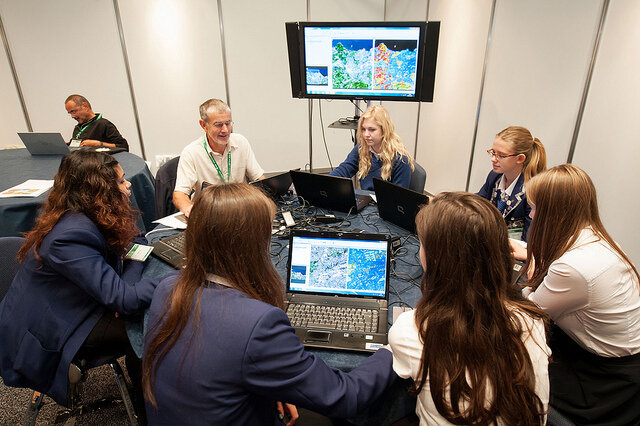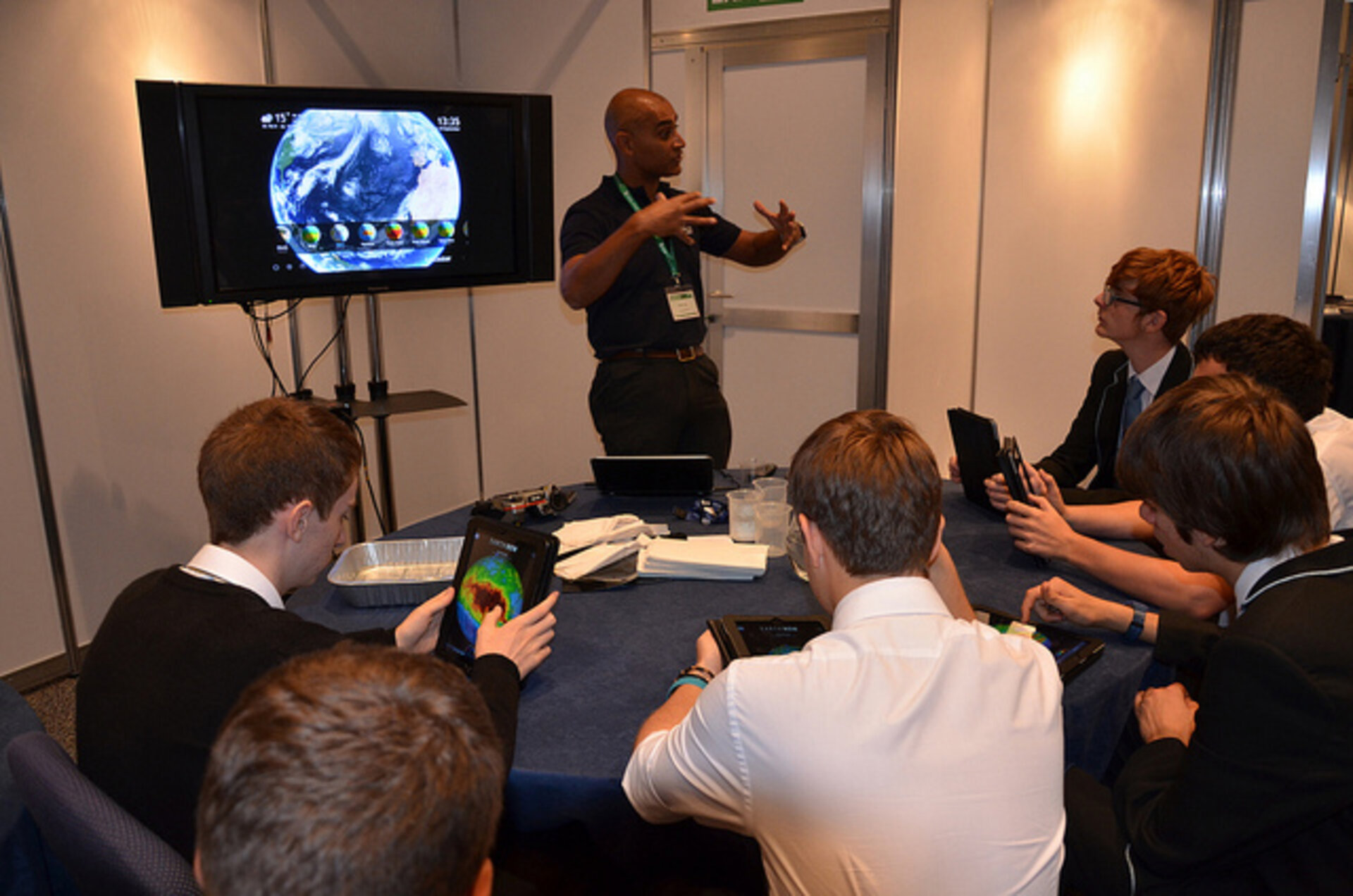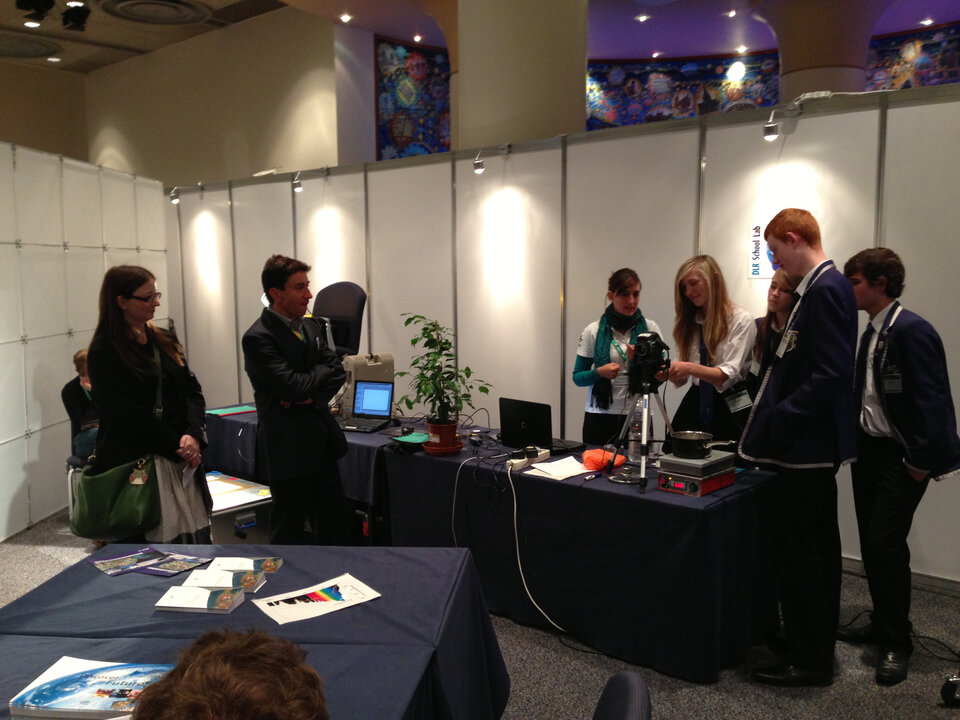Students learn to observe the Earth at the Living Planet Symposium School Lab
Over 100 students and educators from the UK took part in a School Lab ran last week in Edinburgh, Scotland, as part of the Living Planet Symposium 2013. The Lab gave participants the opportunity to learn about the science and technology behind Earth Observation through half day sessions of lab experiments and demonstrations.
The activity was a joint venture organised by the DLR_School_Lab, the Virtual Reality Theatre ESA/ESRIN, the ESA Eduspace initiative, and the UK Space Agency, in partnership with the UK National Space Academy.

The School Lab introduced students aged 16 – 18 years old, and those educating these age groups, to EO and remote sensing techniques. This gave a real life demonstration of the skills they had learnt or been taught through schools courses in Geography, Physics, Chemistry, Mathematics, Biology and General Science, highlighted the many applications and importance of EO, and provided guidance on careers in the space sector.
Each School Lab session was aimed at 15 participants and involved parallel sessions of three activities, one provided by each agency. Participants then experienced a 3D multimedia experience of the GOCE satellite and data derived from the mission including the Earth’s geoid, and a chance to meet those working on EO during a symposium exhibition tour.

The UK Space Agency, in collaboration with the National Space Academy, presented an introduction to Earth’s atmosphere–surface system followed by participants conducting thermal imaging experiments on water temperature circulation. The relevance of this to tropical storm formation was then explored with students studying both sea surface temperature data from the last 20 years of ESA EO missions and following progress of the Gabrielle storm across the Atlantic towards Bermuda using real-time smart technology apps.
The DLR_School_Lab demonstrated optical remote sensing experiments by the use of an infrared camera allowing students to discover thermal characteristics of their environment. The session was complemented using a surface field spectrometer encouraging students to make their own observations and interpretations of different static and vital surfaces like a pot plant at various wavelengths of the reflected solar spectrum.

As well as providing the 3D demonstration, ESA ran computer sessions developed under the Eduspace initiative, with students studying images of Scotland detected via various EO instruments. Using the LEOWorks 4 software, developed as part of Eduspace for use by secondary school students, school lab participants then processed these images for specific applications.
On the day coordinator, Hannah Garrett from the UK Space Agency said “It was great to see how the activities stimulated student-driven discussions and educators sharing their own background and knowledge. The feedback from students was very positive including comments such as “fun”, “interesting” and an “opportunity we just don’t get in school”.
Positive effects on the participating groups became evident during the sessions: although the experiments were independent from each other, they were all in the same context. Remarkably, students drew on newly learned theoretical and practical findings to field new questions based on their subsequent experiments.





